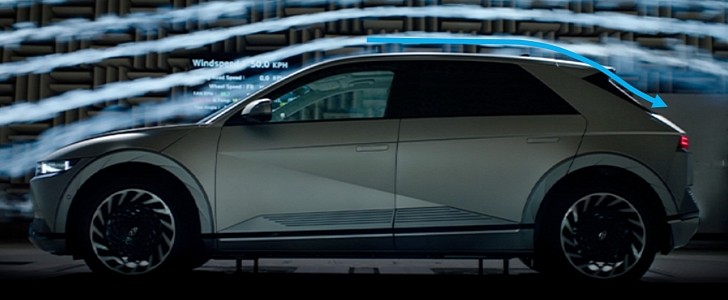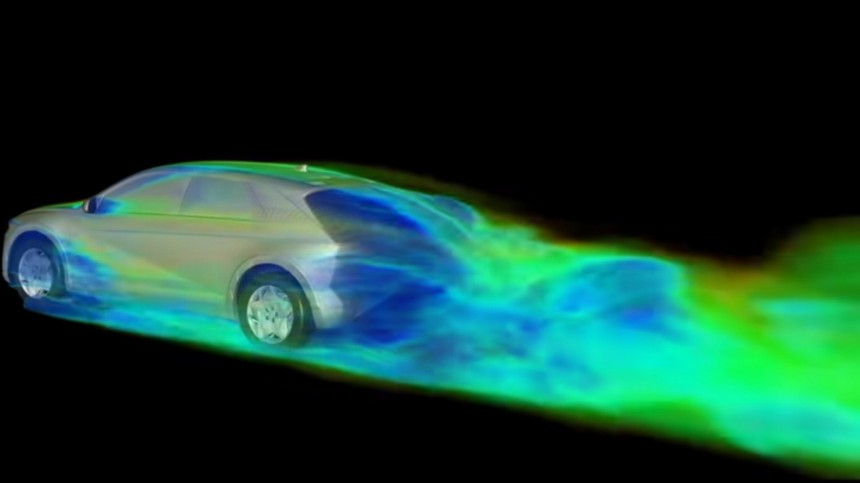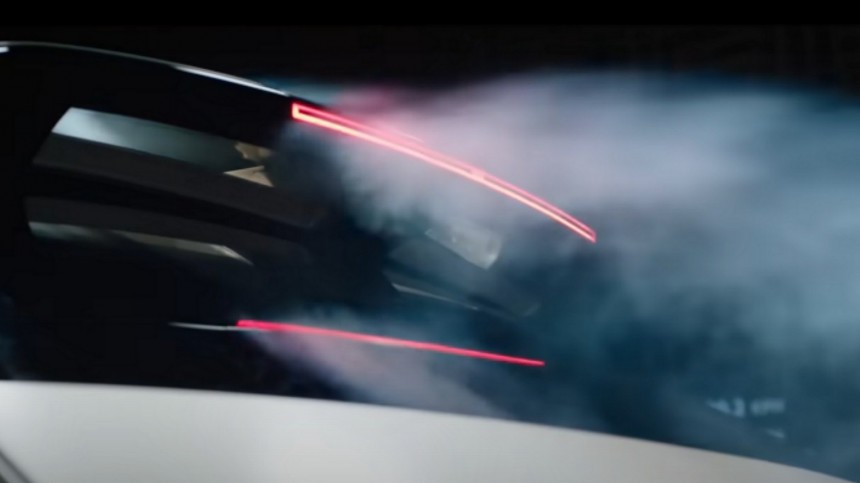Before covering a Battery Life video about the Hyundai Ioniq 5, we had never heard that the electric crossover did not have a rear wiper. Christian Stadler drove that car on a rainy day in an autobahn and said rear visibility was really poor. We then started a quest to understand why Hyundai got rid of that component on the Ioniq 5 and if it could have done that in the first place.
That intrigued us for a simple reason: the Ioniq 5 has a truncated rear. Cars with this characteristic (hatchbacks, SUVs, station wagons…) need a rear wiper because of aerodynamics.
When the air flows over the car body, any line interruption causes turbulence. In other words, the air detaches from the body and swirls. That makes dust, water, and other elements concentrate in that area because air is not wiping them away. That is the reason why most vehicles with that body characteristic have rear wipers.
Only sedans and coupes can get rid of these components because the air flows through their rear windows until the edge of the trunk lids. That’s where turbulence forms in those cars, but that does not harm rear visibility – it only leaves taillights and license plates dirtier.
We asked Hyundai what made it think it could eliminate the rear wiper on the Ioniq 5, and the only answer the company provided was this:
“The Ioniq 5 is optimized for practicality, usability, and energy efficiency with a flexible and spacious interior that is configurable to users' lifestyles. To ensure the best aerodynamic performance, Hyundai implemented a streamlined design that led to the decision to exclude the rear wiper altogether.”
We then asked the company what this streamlined design does to prevent dust and water from accumulating on the rear glass, but the company did not provide us more information about that. That’s when Wouter Remmerie, CEO at AirShaper, came to rescue. AirShaper is dedicated to aerodynamic optimization and analysis.
Remmerie was kind enough to offer us his insights even without a 3D model of the Ioniq 5, which is crucial for adequately assessing the design. The AirShaper CEO told us he would eventually have that 3D model, but it may take a while. That said, if you happen to have a 3D model of the Ioniq 5 that you could send him, that would be really useful for final analysis.
With images Hyundai released, Remmerie did the best he could:
“The Hyundai Ioniq 5 seems to fit in the hatchback group, with a rear windscreen that is fairly upright. Yet, it doesn't feature a rear windscreen wiper. When checking the rear spoiler of the car, one could argue that the intake slots at the top would channel air across the rear window.”
In Hyundai’s official video about aerodynamics (check it below), Youngming Park states that the rear spoiler was designed “not only to improve aerodynamic performance but also to assist the contamination of the rear glass." Unfortunately, Hyundai’s CFD (Computational Fluid Dynamics) port leader did not get into details of how well the spoiler worked in any of these tasks. Remmerie discussed that with autoevolution and said the angle of the rear glass is a concern.
“This would be quite a sharp angle for the air, possibly increasing drag. And when looking closely at the slots in the spoiler, it seems that they indeed guide the air down but not enough to connect to the rear window.”
The AirShaper CEO created the image above to illustrate his point:
“There is still a stepped drop (orange line) between the end of the spoiler and the rear window, which would cause separation of the flow and thus a turbulent region (see the curly blue lines).”
In other words, this could be the cause of the poor visibility Stadler reported in his video. Remmerie stressed that these are just assumptions until he has the 3D model to make a final analysis. We’ll write about this again when he does. Still, you may start to ask Hyundai to review its decision not to have a rear wiper on the Ioniq 5 if you intend to buy one. All elements so far indicate it could not have been eliminated without hurting rear visibility.
When the air flows over the car body, any line interruption causes turbulence. In other words, the air detaches from the body and swirls. That makes dust, water, and other elements concentrate in that area because air is not wiping them away. That is the reason why most vehicles with that body characteristic have rear wipers.
Only sedans and coupes can get rid of these components because the air flows through their rear windows until the edge of the trunk lids. That’s where turbulence forms in those cars, but that does not harm rear visibility – it only leaves taillights and license plates dirtier.
“The Ioniq 5 is optimized for practicality, usability, and energy efficiency with a flexible and spacious interior that is configurable to users' lifestyles. To ensure the best aerodynamic performance, Hyundai implemented a streamlined design that led to the decision to exclude the rear wiper altogether.”
We then asked the company what this streamlined design does to prevent dust and water from accumulating on the rear glass, but the company did not provide us more information about that. That’s when Wouter Remmerie, CEO at AirShaper, came to rescue. AirShaper is dedicated to aerodynamic optimization and analysis.
Remmerie was kind enough to offer us his insights even without a 3D model of the Ioniq 5, which is crucial for adequately assessing the design. The AirShaper CEO told us he would eventually have that 3D model, but it may take a while. That said, if you happen to have a 3D model of the Ioniq 5 that you could send him, that would be really useful for final analysis.
“The Hyundai Ioniq 5 seems to fit in the hatchback group, with a rear windscreen that is fairly upright. Yet, it doesn't feature a rear windscreen wiper. When checking the rear spoiler of the car, one could argue that the intake slots at the top would channel air across the rear window.”
In Hyundai’s official video about aerodynamics (check it below), Youngming Park states that the rear spoiler was designed “not only to improve aerodynamic performance but also to assist the contamination of the rear glass." Unfortunately, Hyundai’s CFD (Computational Fluid Dynamics) port leader did not get into details of how well the spoiler worked in any of these tasks. Remmerie discussed that with autoevolution and said the angle of the rear glass is a concern.
“This would be quite a sharp angle for the air, possibly increasing drag. And when looking closely at the slots in the spoiler, it seems that they indeed guide the air down but not enough to connect to the rear window.”
“There is still a stepped drop (orange line) between the end of the spoiler and the rear window, which would cause separation of the flow and thus a turbulent region (see the curly blue lines).”
In other words, this could be the cause of the poor visibility Stadler reported in his video. Remmerie stressed that these are just assumptions until he has the 3D model to make a final analysis. We’ll write about this again when he does. Still, you may start to ask Hyundai to review its decision not to have a rear wiper on the Ioniq 5 if you intend to buy one. All elements so far indicate it could not have been eliminated without hurting rear visibility.













